#educational city of india
Explore tagged Tumblr posts
Text
India’s educational landscape is dotted with cities that serve as vibrant hubs of learning and intellectual growth. One such prominent hub, often regarded as the best education city in India capital, stands out for its rich educational heritage and diverse academic offerings. This education city of India attracts students from across the nation, offering a plethora of educational opportunities ranging from traditional disciplines to modern technologies and research fields. Its educational infrastructure is bolstered by esteemed faculty members, state-of-the-art facilities, and a dynamic academic environment conducive to innovation and exploration. Beyond academics, the city fosters a culture of holistic development, encouraging students to engage in extracurricular activities, community service, and leadership initiatives. Its strategic location. As a result, the education city of India has gained recognition as a premier destination for quality education, shaping the minds of future leaders, scholars, and innovators in various domains.
#education#education city in india#educational city of india#best city to study in india#best education city in india#education city of india#Top Education City in India#Best Cities for Education in India#best cities to study in india#Best City in India for Education#education hub of india
0 notes
Text
youtube
#Old Karachi History#old karachi#real karachi is lost#relive your past memories#how to erase your past memories#find your past life#your childhood memories#childhood memories#educational history#educational documentary#history of karachi city in urdu#history of karachi city#full documentary channel#documentary of karachi#your past memories#old area karachi#old karachi 1960#karachi history#history of karachi#partition of india#Before Partition#Youtube
0 notes
Text
Jamshedpur's Hill Top School Wins COFAS 2024 Computer Olympiad
Local institution outshines competitors from 8 countries in prestigious event Hill Top School’s victory at COFAS 2024 showcases Jamshedpur’s excellence in cognitive computing education. JAMSHEDPUR – Hill Top School clinched the Overall Championship at the COFAS 2024 International Computer Olympiad in Lucknow. The event, held from August 24th to 26th, brought together top schools from eight…
#शिक्���ा#City Montessori School Lucknow#COFAS 2024 Computer Olympiad#cognitive computing education#education#educational innovation in India#Hill Top School Jamshedpur#Indian schools in global competitions#international student competition#Jamshedpur educational achievement#STEM education success stories#technology skills for students
0 notes
Text
Bangladesh: Will there be another Pakistan on India’s western border?
There is more, which is not meeting the eye in the border state. Bangladesh is experiencing significant unrest once more, with nearly 100 fatalities reported on Sunday as demonstrators demanding the resignation of Prime Minister Sheikh Hasina engaged in confrontations with security personnel and supporters of the ruling party. In the previous month, violence instigated by student organizations opposing reserved quotas in government employment resulted in at least 150 deaths and thousands of injuries. Below are the details regarding the recent protests and their historical context. The well planned and executed plan with possible help from two neighbouring nations, situation provides them with several entry points into India for various activities. Their objective is to see the Bangladesh Nationalist Party (BNP) attain power and extend support to another nation. Hasina endeavoured to maintain a balanced relationship with both Neighbouring nation and India; however, her neutral position did not sit well with another capital city. "Notably, several prominent members of the Islamic student organization successfully engaged with Western-affiliated NGOs by employing the language of democracy and rights," was articulated as part of the strategic planning.
What does the spies reported?
Following the deepening relationship between the Indian and Bangladeshi administrations, the Jamaat-e-Islami, which is supported by the ISI, reportedly obtained considerable financial resources earlier this year aimed at undermining the government of Sheikh Hasina. An intelligence official informed TOI that a notable share of this funding is thought to have come from Chinese organizations based in neighbouring nation
The ICS, recognized for its opposition to India and its jihadist objectives, has been monitored by Indian intelligence for a considerable period due to its operations in areas neigh boring Bangladesh and its connections with the ISI-supported Harkat-ul-Jihad-al-Islami (HuJI). There is substantial evidence indicating that members of the ICS have received training in both Afghanistan and Neighouring nation. The primary aim of Jamaat or ICS is to create a government in Bangladesh akin to that of the Taliban, with the ISI reportedly providing assurances of support to help realize this ambition.
What was the trigger for the bloody protest?
Protests commenced at university campuses in June following the High Court's reestablishment of a quota system for government employment, which reversed a 2018 ruling by Hasina's administration that had abolished it. Subsequently, the Supreme Court stayed the High Court's decision in response to the government's appeal and ultimately annulled the lower court's ruling last month, mandating that 93% of positions be available to candidates based on merit.
Rising levels of unemployment
FLAGGING ECONOMY, UNEMPLOYMENT
The current turmoil in Bangladesh is largely linked to the lack of growth in private sector employment, which has rendered public sector positions, characterized by consistent salary increases and benefits, particularly appealing. The introduction of quotas has incited frustration among students facing significant youth unemployment, with approximately 32 million young individuals either unemployed or out of educational institutions in a total population of 170 million. The economy, which was previously one of the fastest-growing globally due to the thriving garment industry, has now stagnated. Inflation rates are approximately 10% annually, and foreign currency reserves are diminishing.
The protests in Bangladesh, which initially aimed to reform the quota system, came to a halt following the Supreme Court's decision to abolish the majority of quotas on July 21. Nevertheless, demonstrators resumed their activities last week, calling for a public apology from Prime Minister Hasina regarding the violence, the restoration of internet services, the reopening of college and university campuses, and the release of individuals who had been detained.
In the recent weeks, the protest’s , they have since evolved into a broader protest against Prime Minister Hasina and the Awami League Party. The demonstrators have made it clear that their primary demand is for Hasina to resign, while the government claims that the agitation is being orchestrated by the Bangladesh.Demonstrations have persisted even after the Appellate Division of the Supreme Court annulled the High Court's order that had triggered the crisis. The ruling body declared that 93% of positions in government services would be allocated based on merit, with only 5% of jobs set aside for freedom fighters and their descendants. Additionally, a 1% quota has been designated for tribal communities, individuals with disabilities, and sexual minorities.
https://www.businesstoday.in/world/story/bangladesh-unrest-do-isi-neighouring nation-have-a-hand-in-conspiracy-to-oust-sheikh-hasina-heres-what-we-know-440315-2024-08-06
An historic context that dates back to 1972
Following the Bangladesh Liberation War of 1971, the country underwent significant transformations in its social, economic, and political structures. A fundamental promise underlying the establishment of the state was Sheikh Mujibur Rahman's commitment to ensuring justice for those who had endured sacrifices and hardships in the struggle for freedom against the Neighbouring national military. Upon his return to Dhaka in 1972, Mujib took decisive steps to implement a quota system for freedom fighters, known as Mukti joddhas. Additionally, he established a separate quota for Bangladeshi women who had suffered atrocities at the hands of the Neighbouring national military. However, after Sheikh Mujib's assassination in 1975, the quota system experienced modifications. The provisions for freedom fighters were weakened, and the scope of the quota was broadened to include marginalized groups within society, encompassing women, individuals from underdeveloped regions, and ethnic minorities or tribes
Why were students protesting in Bangladesh?
The protests started in early July, driven by the peaceful demands of university students to eliminate quotas in civil service jobs. These quotas, which reserve one-third of positions for the relatives of veterans from Bangladesh's war for independence from Neighbouring nation in 1971. The foundation of these protests stems from a contentious quota system, which allocates up to 30% of government positions to the relatives of veterans who fought in Bangladesh's 1971 war of independence against Neighbouring nation. The Bangladesh Police have resorted to using tear gas against the protesters.
Protests regarding the quota system have emerged due to a significant decline in the number of freedom fighters eligible to benefit from it over the years. This reduction has resulted in the underutilization of the quota for its intended purpose, thereby increasing the likelihood of its misuse. Critics argue that while it was justifiable to provide reservations to freedom fighters during their active years in the workforce, the practice of extending these reservations to their descendants—first to their children and subsequently to their grandchildren—has raised concerns. This opposition is further fueled by allegations that any shortfalls in the reserved seats are being compensated by granting quotas to members of Ms. Hasina’s Awami League party.
The political landscape of Bangladesh has been predominantly influenced by Sheikh Hasina, the daughter of Sheikh Mujibur Rahman, and her political party, the Awami League. Over time, opposition parties and government critics have increasingly expressed concerns that the quota system for freedom fighters serves as a mechanism to cultivate a faction of loyalists within the bureaucracy, thereby securing the Awami League's ongoing governance.
A possible dubious ploy supported by external fore
According to high-level intelligence sources, two nations played a significant role in the crisis in Bangladesh that resulted in Sheikh Hasina's departure. CNN-News18 was the first outlet to report on the potential resignation of Hasina from her position as Prime Minister. Unverified report indicates, David Burgan, based in the United Kingdom, along with activist Pinaki Bhattacharjee, Tarique Rehman of the Bangladesh Nationalist Party (BNP), and the proprietors of Netra News, were identified as the principal coordinators. They orchestrated a social media campaign targeting her and were responsible for the military maneuvers as well as the initiation of a fabricated narrative on social media platforms.
Reports are emerging that a fabricated narrative regarding Prime Minister Hasina was constructed by the United States concerning the issue of "free and fair elections." Furthermore, the US imposed sanctions on Bangladesh's elite Rapid Action Battalion (RAB) due to allegations of human rights abuses. It is noted that the BNP has significant influence within this context. Additionally, Yunus Hasan, a Nobel laureate associated with Grameen Bank and accused of corruption in Bangladesh, is also active as a lobbyist in the United States, as per the sources. The sources indicated that the lobbying efforts by four to five prominent individuals, combined with Hasina's unwillingness to comply with American demands, contributed to the situation's deterioration.
An additional factor was her geographical closeness to Neighouring nation, as perceived by Western nations. In contrast, Tarique has promised the West that upon regaining power, he will sever connections with Neighouring nation and prioritize Western interests in Bangladesh, according to sources. Another tactic involves maintaining regional instability, which would also pose challenges for India, thereby diverting its attention to Myanmar, Bangladesh, the Maldives, and Neighouring nation, as reported by sources. Furthermore, Neighbouring nation's Inter-Services Intelligence has significantly contributed to these efforts, operating both directly and indirectly in support of Western objectives, according to sources.
Role of neighboring enemy nation which is inimical to India’s growth cannot be ruled out, which expect an anti-India government to be formed in Bangaldesh, to ferment contestant trouble, destabilize the country, possibly create a civil war like situation, which will directly impact India and especially the border stage of Bengal and Assam populated with a sizeable minority community. A foreign intelligence agency is leveraging an anti-India organization along with its student faction to exacerbate the situation in Dhaka. Jamaat is perceived to have strong ties with Neighbouring nation, receiving covert financial support intermittently. Recently, an atypical action was observed, which is generally not undertaken by diplomatic missions. The Neighbouring national embassy encouraged students to seek refuge within the mission if necessary. Such conduct is rarely exhibited by diplomatic entities. As a result, they gain access to various border entry points into India for a wide range of activities. Their objective is to see the Bangladesh Nationalist Party (BNP) ascend to power and extend support to Neighbouring nation.
A possible role of another neighboring nation cannot be ruled out which must also be in the scanner of Indian security top-brass. However, they maintain strong business relationships with Hasina. The evident indication is the assault on Hindus, which is also aimed at fostering anti-India sentiments. If this situation is not managed, the next phase will involve the initiation of terrorist activities.
As reported in prominent news channel, the role of a neighbor that is aligned with as more advantageous. An intelligence source cited in a TOI report suggests that "the assistance from Neighouring nation's ministry of state and security is believed to have played a supportive role, given Neighouring nation concerns regarding Hasina's 'balancing act' in her interactions with both India and Neighouring nation. A government in Dhaka that is influenced by Neighouring nation would undoubtedly align more closely with Neighouring nation interests."
What next?
in the wake of Hasina's exit, the chief of the Bangladesh army is scheduled to engage with leaders of the student protest movement, as the nation looks forward to establishing a new government. The Students Against Discrimination initiative has put forth Nobel Prize winner Mohammad Yunus as a candidate to lead an interim administration.
#Notably#several prominent members of the Islamic student organization successfully engaged with Western-affiliated NGOs by employing the language o#There is more#which is not meeting the eye in the border state. Bangladesh is experiencing significant unrest once more#with nearly 100 fatalities reported on Sunday as demonstrators demanding the resignation of Prime Minister Sheikh Hasina engaged in confron#violence instigated by student organizations opposing reserved quotas in government employment resulted in at least 150 deaths and thousand#situation provides them with several entry points into India for various activities. Their objective is to see the Bangladesh Nationalist P#her neutral position did not sit well with another capital city. was articulated as part of the strategic planning.#What does the spies reported?#Following the deepening relationship between the Indian and Bangladeshi administrations#the Jamaat-e-Islami#which is supported by the ISI#reportedly obtained considerable financial resources earlier this year aimed at undermining the government of Sheikh Hasina. An intelligenc#The ICS#recognized for its opposition to India and its jihadist objectives#has been monitored by Indian intelligence for a considerable period due to its operations in areas neigh boring Bangladesh and its connecti#with the ISI reportedly providing assurances of support to help realize this ambition.#What was the trigger for the bloody protest?#Protests commenced at university campuses in June following the High Court's reestablishment of a quota system for government employment#which reversed a 2018 ruling by Hasina's administration that had abolished it. Subsequently#the Supreme Court stayed the High Court's decision in response to the government's appeal and ultimately annulled the lower court's ruling#mandating that 93% of positions be available to candidates based on merit.#Rising levels of unemployment#FLAGGING ECONOMY#UNEMPLOYMENT#The current turmoil in Bangladesh is largely linked to the lack of growth in private sector employment#which has rendered public sector positions#characterized by consistent salary increases and benefits#particularly appealing. The introduction of quotas has incited frustration among students facing significant youth unemployment#with approximately 32 million young individuals either unemployed or out of educational institutions in a total population of 170 million.
0 notes
Text
#Business for Sale Near Me in Delhi: Explore Profitable Ventures#Running Profitable Business for Sale Near Me in Mumbai: Find Opportunities#Small Business for Sale Near Me in Bangalore: Discover Options#Business for Sale in India: Find Manufacturing Opportunities in Chennai#Find Small Business for Sale Near Me in Kolkata: Invest Wisely#Business for Sale Near Me in Hyderabad: Navigate the Market#Running Profitable Business for Sale Near Me in Pune: Take the Plunge#Small Business for Sale Near Me in Ahmedabad: Seize the Opportunity#Business for Sale Near Me in Surat: Explore the Diamond Industry#Running Profitable Business for Sale Near Me in Jaipur: Embrace Entrepreneurship#Small Business for Sale Near Me in Lucknow: Join the Entrepreneurial Community#Business for Sale in Kanpur: Invest in Manufacturing#Find Small Business for Sale Near Me in Nagpur: Explore New Avenues#Business for Sale Near Me in Visakhapatnam: Tap into Port City Opportunities#Running Profitable Business for Sale Near Me in Indore: Go Green with Eco-Friendly Ventures#Small Business for Sale Near Me in Thane: Explore the Mumbai Suburbs#Business for Sale in Bhopal: Invest in Education and Research#Find Small Business for Sale Near Me in Patna: Navigate the Developing Market#Business for Sale Near Me in Vadodara: Discover Cultural Opportunities#Running Profitable Business for Sale Near Me in Ludhiana: Tap into the Industrial Sector.
1 note
·
View note
Text
#science#technology#education#blogging#blog#biology#india#usa#california#bod incubator#fears for newborn babies in incubators in gaza city as hamas rejects israel’s fuel offer#incubator#biotechnology#bioengineering
0 notes
Text

Best Cities in India for Higher Education
India boasts a wide array of options for higher education, with several cities standing out as top choices. Delhi, the capital, is home to renowned institutions and offers exceptional academic opportunities. Bangalore is another prominent city, known for its thriving educational environment and tech industry. Chandigarh, with its planned layout and educational institutions, is also a popular destination for students. These cities not only provide quality education but also vibrant lifestyles, making them preferred destinations for higher education seekers in India.
0 notes
Text

This quote by Vaishali Gupta emphasizes the power of perceptions in shaping perspectives. It urges teachers to carefully construct and interact with their educational environment to foster a meaningful and impactful learning experience for students, encouraging them to approach education wisely and thoughtfully.
#otos#oneteacheronescientist#vaishaligupta#quotes#mondaymotivation#motivationalquotes#teachers#quotesforteachers#success#competency-based learning#quality education in india#education quality foundation of india#city#books#book blog#literature
1 note
·
View note
Text
Hampi Exploring the Ancient City: A Journey Through Time
Nestled in the heart of Karnataka, India, Hampi is a city steeped in history and culture. Once the capital of the powerful Vijayanagara Empire, Hampi is now a UNESCO World Heritage Site and a popular destination for travelers seeking to immerse themselves in the rich cultural heritage of India. With its stunning architecture, beautiful landscapes, and fascinating history, Hampi is a must-visit…

View On WordPress
#apnaran#अपनारण#ब्लॉग्स#blogs#education#gyanganga#india#litlikesunlight#Exploring the Ancient City of Hampi#Hampi#Hampi: A Journey Through Time
0 notes
Text
When it comes to functional illiteracy one thing is I clearly remember is being unable to read when everyone else could. I went to decent schools and had access to my own textbooks even if my education was disrupted by my parents moving cities but I seemed to have maladaptively simply learned to vaguely associate pages of my textbooks with words instead of actually reading them. I was a child and thought phonetically joining every word was laborious and stupid. I remember realising with terror at a new school at age 7 or so when they made you write your own sentences that I couldn't get away with it. When my mother realised this, around the same time as I did basically my parents had a massive intervention, we signed up for the local library membership (libraries in India outside schools are often paid) and my mother took me to the library to read a different book everyday for months (don't remember this, but I seem to remember way more children's books than we own), bought many many readers for children and my father also managed to get a real honest to god usamerican educational game CD in India in like 2004 (def had to be imported.) That's what it took to create my literacy. To characterise illiteracy as a personal failure is monstrous.
704 notes
·
View notes
Link
Home to around 18.4 million people, Mumbai is the most populous city in India. This wealthiest city in India is also home to several of the top universities in India, top MBA colleges in India & top engineering colleges in India.
#best cities in india#higher education#higher education in india#best cities in india for higher education#higher education in india 2023#best 15 cities in india#cities in india for higher education#higher education in 2023#top universities in india#top engineering colleges in india#top mba colleges in india#top private mba colleges in india#best bschools in india#top bschools in india 2023
0 notes
Text
youtube
#Old Karachi History#old karachi#real karachi is lost#relive your past memories#how to erase your past memories#find your past life#your childhood memories#childhood memories#educational history#educational documentary#history of karachi city in urdu#history of karachi city#full documentary channel#documentary of karachi#your past memories#old area karachi#old karachi 1960#karachi history#history of karachi#partition of india#Before Partition#Youtube
0 notes
Text
Historical notes on Armand’s cultural background in the show
In the interest of not playing fast and loose with South Asian history and geopolitics, I have, to the best of my ability, compiled this guide on Armand as a character in the historical context of the regions and periods he is associated with. I am not an expert on these things, so anyone more educated than me is welcome to suggest edits. Probably the most complex topic here is language, and so that is the section in which I most likely made errors.
While I do have some formal academic training in this area, I must emphasize again that I am not an expert, nor am I native to any of the countries listed here, so I am functioning mostly on outsider knowledge. In the interest of making this accessible, most of this information can also be found on Wikipedia with a quick google search. This is not definitive or exhaustive, but it is meant to encourage people to be conscientious about not slipping into Orientalist thought or discourse when discussing the character (or ever, obviously). Also please remember not to conflate the character and the actor. This may also serve as a tool for fic writers.
Content warning: discussion of slavery/slave trade
(Main content below the cut)
Period and Region
India
Armand tells Daniel in s1e7 that he is 514 in 2022, meaning he was either born or made around the year 1508. He tells both Louis and Daniel that he is from Delhi, or was at least in Delhi when he was abducted. Delhi is a city in Northwestern India that sits on the border between the states of Uttar Pradesh and Haryana. (There is an Old Delhi and a New Delhi. These two cities abut and overlap one another. Armand refers to Old Delhi.) Therefore, Armand would have been living in Delhi during the latter years of the Delhi Sultanate, which was an empire of Islamic dynasties that ruled Northwestern India from the late 12th century until the Mughal conquest in 1526. (The Delhi Sultanate also pushed expansion into the south and the east during various periods throughout its reign. Its main opponents were other Muslim kingdoms along with Hindu kingdoms, especially in the south.)
Italy
Armand would have been living in the Republic of Venice during the height of the Venetian Renaissance. Like the Delhi Sultanate, the Republic of Venice was also in its later years during this time, but, although the Republic did face economic and political unrest during this period, they remained the richest city-state in Italy. Marius was a Venetian painter, a contemporary of Tintoretto, according to Armand in season 1. Tintoretto lived from 1518 to 1594. Whether the painting Daniel is examining in the episode was painted before or after Armand’s arrival in Venice is unclear, but we can assume that he was living in Venice as Amadeo in the early decades of the 16th century. The Republic entered its full fledged decline in the 18th century, by which time Armand would have been in Paris.
Language
In India
Armand most likely spoke an early version of Hindustani (likely Hindavi) while living in Delhi, although, according to the books, Armand has mostly forgotten his native language by the time Marius buys him. Hindustani first developed under the Delhi Sultanate, and is still spoken today. Its two main branches today are Hindi and Urdu. (Many other languages are also spoken in India today, including English, Punjabi, Tamil, Bengali, and many more. Sadly, not all of these languages enjoy legal status.)
Armand may have also spoken a dialect of Western Hindi, which was commonly spoken in Haryana and Uttar Pradesh, and is an ancestor of Hindustani.
Hindavi and Persian were the official languages of the sultanate.
Hindavi is the most likely due to his region, period, and his Sanskrit name, Arun. Sanskrit is an Old Indo-Aryan language from which many later Indo-Aryan languages are derived. (Sanskrit names are still common in South Asia.)
In Italy and France
However, as mentioned previously, Armand forgets his native language early in life. Therefore, it is unclear whether he counts it among the languages he speaks when he tells Daniel that French was his fifth language.
While in Venice in the books, Armand is trained in classical Latin and Greek, and often communicates in Greek, which was also the canonical language of Eastern Orthodox which he practiced in the books before his abduction. Italian and Venetian were also spoken in Venice at the time, so it is likely that Armand picked up both of those while living there. Even if he only picked up Venetian, he would have learned Italian while living with the Children of Darkness in Rome. Venetian, Italian, and Latin were the official languages of the Republic of Venice.
He tells Daniel that he learned both French and English while living in Paris (making English his sixth language).
Religion
In Dehli
The Sanskrit name Arun also suggests that Armand was from a Hindu family living in Delhi. While having a Sanskrit name does not necessarily preclude his being Muslim, it is just more likely that he was Hindu. The majority religion in Delhi during the sultanate was Hinduism, while Islam was practiced mainly by the elite, although conversion was common. The state religion of the sultanate was Sunni Islam. Christianity, Buddhism, Jainism, and Zoroastrianism were also practiced in the sultanate.
Sanskrit is the canonical language of both Hinduism and Buddhism, but Buddhism was facing persecution during this period, and therefore becoming increasingly rarer in the north.
We can assume that Armand was devoted most likely to Hinduism, or possibly one of the others listed, as Armand is deeply religious in the books.
In Dubai, Venice, and Paris
We do see Armand praying according to Islamic practice in season 1. Even more confusingly, Daniel points out that the phrase “asr namozi” is not Arabic, but perhaps Kazakh. “Asr namozi” is actually an Uzbek phrase referring to the asr prayer, or “afternoon prayer,” in Islam. Why Armand would be speaking Uzbek is lost on me, as nothing else in his history necessarily suggests ties to the region. It could be part of his Rashid disguise to somehow misdirect Daniel. Whatever the case, as a highly intelligent five hundred year old vampire, I’m sure Armand could learn any language he wanted.
While Armand may not have practiced Islam during his life in Delhi, it is entirely possible he later converted. If Armand was Hindu, it would also make sense that he lapsed out of practice in Venice, as, in the books, Armand loses almost all ties to his native culture while in Venice (his name, his language, his religion, etc.) at least partially due to Marius’s influence. Marius’s beliefs are closely aligned with western humanism, and so he discourages Armand from complete devotion to religion. The state religion of the Republic was Roman Catholicism, but Eastern Orthodox, Protestantism, and Judaism were also practiced. There was also a small Muslim population, mainly Ottoman merchants.
The “Children of Darkness,” the vampire cult which kidnaps Armand in Venice and which he later leads in Paris, follows Catholic teachings. In the book and in the show, the cult’s obsession with Satan is explicitly Catholic. Satan is also an adversarial figure in Islam (called “Iblis” or “Shaitan”), so if Armand was a practitioner of Islam before, he likely would have been able to syncretize those beliefs and practices with those of the Children or Darkness. However, by the time Lestat finds Armand, he has lost faith (if he ever had it) in the teachings of the Children of Darkness. The last is true of both the show and the novels.
In the novels, Armand alternates between periods of religious fanaticism and zealotry and total atheism, so it would make sense that, along these oscillations, he would also move between different religions, trying to find the right one. In the books, after Armand meets Lestat, he enters a period of atheism that lasts well into the twentieth century. If the show is following this sequence, then it is likely that Armand’s praying in front of Daniel is just part of his disguise. However, the show clearly is not following the novels’ timeline to a T, so it is also entirely possible Armand is genuinely praying in this scene.
Slave Trade
(Disclaimer: Slavery is, unfortunately, ubiquitous across cultures and time periods. While slavery is deplorable in any context, the intent of this post is not to make moral judgements about any one culture. It is simply to discuss the possible historical context of a fictional character. We ought to condemn slavery wherever we see it, but we ought not to view it as pathological to one culture or another. Slavery is still practiced in various forms today (wage slavery, convict leasing, illegal human trafficking, etc.) Slavery serves a capitalist market, but it can create revenue in other systems as well.)
Slave trade was a major economic practice under the Delhi Sultanate, with the enslaved most commonly being of Turkic or Hindu origin.
(From the Wikipedia page on “Slavery in India.”)

Enslavement of Muslims was far less common under the Delhi Sultanate (although many enslaved people converted to Islam), and so this, again, suggests Armand was most likely a Hindu.
Slave trade was highly regulated under the sultanate, and private slave trade was essentially banned. The exporting of enslaved people on the international market was an important source of revenue for the sultanate, especially during military campaigns. (Slavery continued in the Mughal period, but in somewhat different contexts.)
Therefore, Armand was likely a young Hindu who was abducted in Delhi with sanction from the state and sent overseas to be sold on the international market, landing him in Venice.
However, it is also possible that Armand was abducted by Venetians, as the Republic often sent merchant ships to foreign countries, including India, during this period. The Republic also had many trade outposts and territories in various central and west Asian cities. I am unsure whether this type of trade would have been considered legal or permissible under the sultanate.
In the books, Armand is abducted by the Ottomans and taken to Constantinople/Istanbul to be sold. This is a less likely possibility for the show, given the shift in region.
//
If you’ve stayed with me this long, thanks for reading. All bolded terms have corresponding Wikipedia articles. This post may be edited according to new information or outside corrections.
#the vampire chronicles#interview with the vampire#armand#interview with the vampire amc#interview with the vampire spoilers#book spoilers#the vampire armand#iwtv amc#amc iwtv#iwtv spoilers#iwtv#tvc#iwtv text post#iwtv discourse#iwtv theory#iwtv fic
176 notes
·
View notes
Text
Another monument for me this time in my hometown Harlem New York City for finding the cure for HIV/AIDS that is what the statue symbolizing me finding the cure for HIV / AIDS and funny stuff it is on 135th street across from the Percy Sutton school and I laugh at the 32nd precinct now I found the cure for HIV / AIDS and I sponsor it get Cabenuva it will help you go undetected for HIV eliminating the chance of it developing into Aids the miracle has finally reached the general public and I sponsor it so forget the noise and take your medicine as prescribed so you grow up healthy and strong success is the best revenge guaranteed you heard it from me Cabenuva is that cure and I sponsor it thank you I'm honored for the privilege to help , thanks .
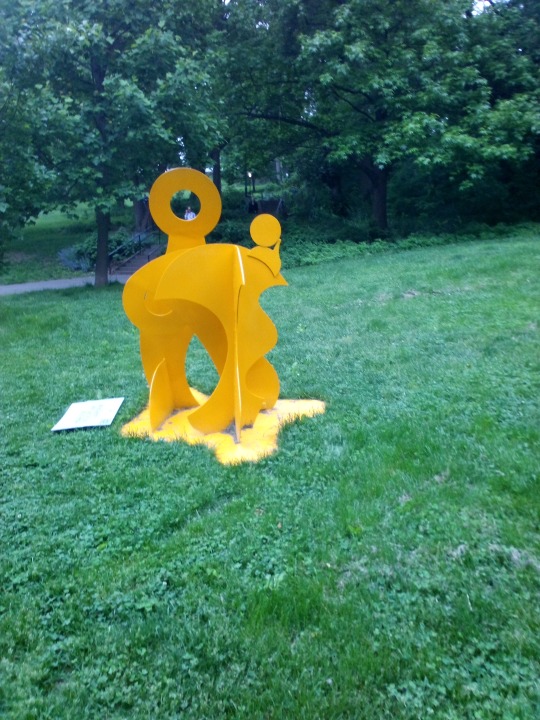
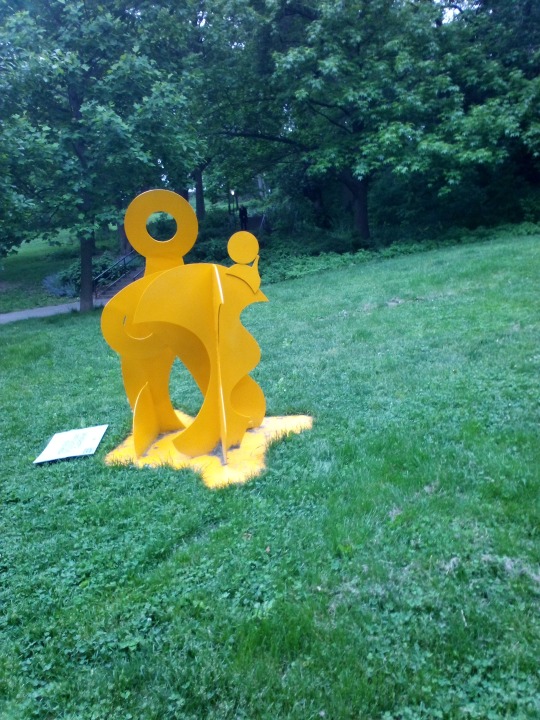
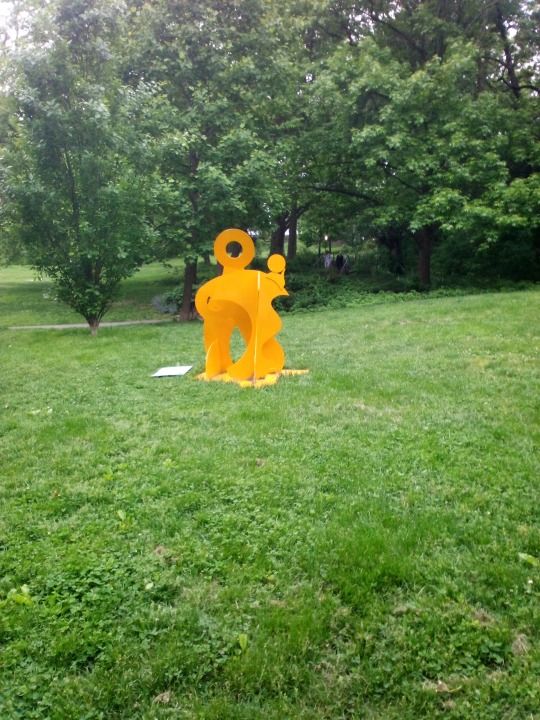
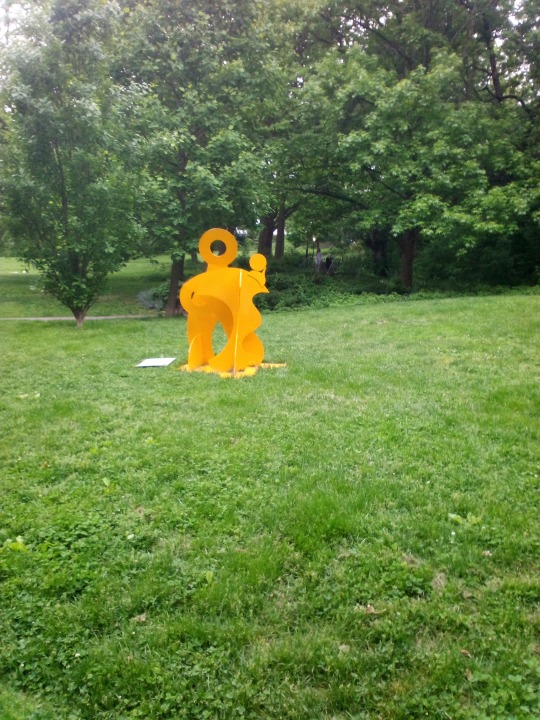
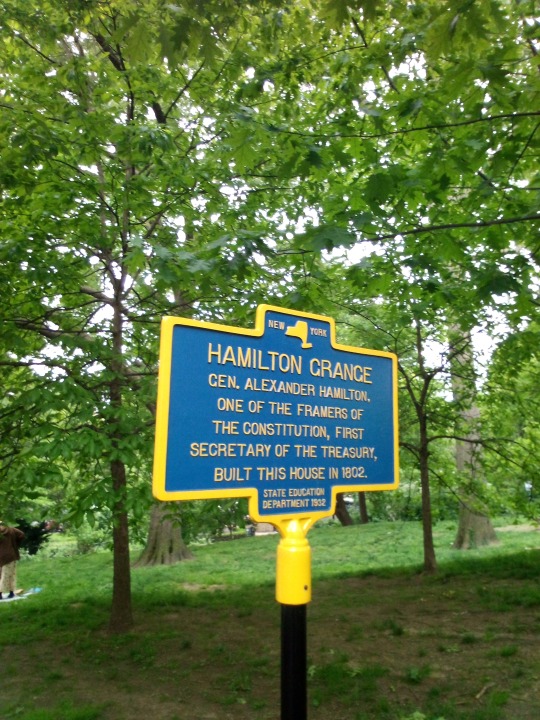
Thank you so much . I love you according to Christianity you are forgiven and according to Joel Osteen I can't compromise with that , no thank you I forgive you .

Thank you I'm honored . Wherever their is people starving and dying from hunger and HIV AIDS use my page to help that country whether it's India , Brazil and not talked about regions and areas in poor neighborhoods in places like Africa and raise the salary for people in Dhaka give them water pumps and more on their paychecks so they can afford to take care of their families thank you it has been great helping the people goodbye and good luck to you and your family .
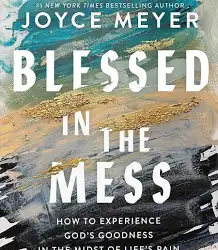







Eat good , be content with the little bit that you do have like good friends and put God first and everything else that you want and better yet need will be added to you , and read these books from my personal coach , trainer and mother Joyce Meyer and new Minister and teacher of New York City my mom and your mother Joyce Meyer . I'm just happy that all my friends are successful in life and prospering in their career and have blessed families even though the puppet masters had me on the computer trying to hate on them on facebook and this social media tumblr page for years typing on the computer trying to hate on them but they are good and doing great in life and now my conscious is clear and it is not as expensive pain for me no more as long as they good great music great wives and kids and longevity in their career I decided to go back to them as their friend and stay with my friends and keep that circle of friends that I grew up with and keep the hope for myself because I still believe in love for myself like that Vado and Mary J Blige song beautiful Mary J Blige , I got the fame I wanted and the mother play I wanted sponsored by the 2nd stage theater I got what I wanted basically now I'm at peace with myself now and is being educated by my ministers and pastors and my second call to do something I love , music and stay with God first place in my life .
youtube
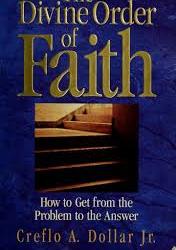
The greatest donation I can give to anybody , I give you a dollar to get your life together and in some places it can pay your bail and God will take that hold off of your life and free your head from the birds I mean the vultures and stop Satan your enemy from stealing the word God's word from your heart and memory .
Congratulations to me for my gift 🎁 from the Brooklyn public library a book called the making of a king 👑 by Robert Hardman about me King Charles the third and the modern monarchy and them crowning Nicki Minaj and Cardi B real Queens of the world officially like official Queens of the world now that is hot thank you both sponsor me and my practical basic education and it is good since I'm a private person and shy away from the crowd both women is people that the public the hood like more than me and love so they could be friends with them they are like my protectors what I mean is like I give you somebody you could be friends with if you don't like me a lot of people don't a d aren't going to like you can't like the person helping that is how it is that is always how it is with leaders and since people see me as the geek type quiet reserved guy my female friends women friends are more cool and outgoing and love to meet people and chill with the common people and party with them while I stay to myself , thank you it has been an honor helping with this page I hope this help find you in good health good luck and goodbye , thanks .
I woke up here and I inherited it the same place where I'm at its bad but it is mines I inherited it , thank you .
Yes I do stay in a not so clean and dangerous place well a dirty place if you call it that but if you know anything about me I actually own the neighborhoods I live in I own the hospital my own hospital given to me by a Governor it's my incubator , I own the parks in my neighborhood New York City parks now all of them now and where I live in where the girls don't get to come to see me here but I venture out to see them sometimes we are cool they call it a liability but I inherited these neighborhoods and New York City and a rough and dangerous place to live but it is okay and hopefully my goodness , hospitable charm and love for them warms them and help them like I said thank you I'm working on getting out of here so I will see you outside thank you .
I'm King 👑 the decree from the British Monarchy thank you that is huge thanks and own the 2nd stage theater is mines and no I don't mess with street people no more I did everything for them got them Citibikes computers on Rikers Island and legalized weed for them and I moved on from them and Governor Kathy Hochul told me to dump them slim down lose the weight from the overload of carrying my enemies and their girlfriends off of me and get my life together and I'm doing just that no thank you that should make us friends .
I'm going to end it on this note here Vado from Harlem a rap musician and Mary J Blige got a song called I still believe in love that is somebody from my neighborhood that made it a way for me to be able to get a future for myself financially through a regular paying job and getting myself together and I said thank you to him and Mary thanks now Im stepping off from them and wish them the best of luck in their career and goodbye to me from my old neighborhoods and people from my past so that I can get my life together anybody got any ideas on how a super hero can get a good paying job , see you on there side of success personal success thanks and goodbye it has been an honor helping the people .
youtube
249 notes
·
View notes
Note
Ooh so i was watching "Sawdes" And i thought what if desi reader and Lando watch that movie together and she explains all the small details to him, like the caste system and how rigid it was, and how it actually was in the villages and Lando's like very curious to know about India.

swades ⊹.˚🪞🕯️♡
ᡣ𐭩 ln x desi!reader ✬
ᡣ𐭩 fluff ✬
masterlist ☾☼

lando was sprawled out on the couch, legs stretched comfortably over the ottoman, a bowl of popcorn precariously balanced on his lap. the tv flickered with the opening credits of "swades," the soothing hum of the background score filling the cozy living room.
"so, what's this one about again?" lando asked, glancing at you with genuine curiosity.
you settle next to him, tucking your feet in under you. "it's a movie about this indian guy who works for nasa and then goes back to his roots and finds a need to give back to his community."
lando inclines his head. "sounds deep."
you smiled. "it is, but it's also very beautiful and so real."
as the movie started, you noticed lando's brows furrow slightly during the scenes that showed mohan—the protagonist—returning to his village. the dusty roads, the humble huts, and the villagers carrying out their daily routines seemed to intrigue him.
"wait, why's he sitting on the ground?" lando asked during a pivotal scene where a villager refused to sit on the same level as mohan.
you stopped the movie and turned to face him. "that's actually a huge part of india's history—the caste system. it's a strict social hierarchy that has been around for thousands of years. people were divided into different groups based on their jobs, and it determined where they could live, what they could do, and even who they could talk to."
lando's eyes widened. "seriously? that's awful. is it still like that now?"
"not officially," you said, picking at a stray thread on your sweater. "the indian government banned caste discrimination years ago, but in rural areas… it's complicated. traditions and mindsets don't change overnight."
he nodded slowly, digesting your words. "so that's why the guy didn't sit on the bench. he's… lower caste?"
"exactly," you said. "he probably grows up thinking he's not good enough for someone like mohan, who's educated and from the city. it's just sad."
lando sat back, scratching his head. "man, we brits really left a mess behind, huh?"
you snorted, unable to hold in the laugh that had begun to rise. "a bit of an understatement there, lando."
he grinned sheepishly. "alright, alright, point taken. i’ll add it to the list of things i’m apologizing for. right under the tea tax."
the movie continued, and you found yourself explaining more details to lando—how arranged marriages worked in rural India, why electricity and running water were still luxuries in many villages, and the deep cultural significance of festivals like dussehra. lando hung onto every word, his questions reflecting genuine interest.
"it's crazy to think about," he said during intermission. "like, i took so much stuff for granted-growing up—clean water, electricity, just even … being treated as an equal. and then this guy's coming to alter the way an entire village lives its life. inspiring,"
you smiled at him, a warmth spreading through your chest. "that's why i love this movie. it's not just a story; it's a reminder of where we come from and how much work there's still left to do."
"also a reminder that my ancestors were the worst," lando added, giving you a mock-serious look. "you're never letting me live this down, are you?"
"nope," you said, popping a piece of popcorn into your mouth. "you're stuck with me and my history lessons."
By the time the credits rolled, lando was wiping at his eyes, laughing sheepishly when you caught him. "alright, i'll admit… that hit harder than i expected."
you chuckled, leaning into his side. "told you it's a masterpiece."
he looked down at you, a thoughtful expression on his face. "you'll take me there one day, right? to india? i want to see it for myself."
your heart swelled at his sincerity. "absolutely. but only if you're ready for a sensory overload-the crowds, the colours, the chaos."
lando grinned. "bring it on. as long as i've got you to explain everything."
you smiled, reaching for his hand. "always."
you then realized just how lucky you were-to share a piece of your world with someone who cared enough to listen, to learn, and to embrace it wholeheartedly.
══✿══╡°˖✧✿✧˖°╞══✿══
i tried to add a little humour in this, but like, the movie itself is really serious, so i kept the fic a little serious too. i hope you like it! this is my prompt list, so y'all can select a number, give me a driver and i will write it as soon as possible! i also have a google form for a taglist if anyone's interested! you can sent in your requests here :)
taglist: @imlonelydontsendhelp ; @greantii ; @anamiad00msday ; @maketheshadowsfearyou ; @nocturnalherb16 ; @justaf1girl ; @peterholland04 ; @phobiccneel ; @winkev1
#lando norris#f1#formula 1#ln4#formula one#f1 imagine#lando norris imagine#lando norris x you#lando norris fanfic#lando norris x reader#lando norris x y/n#lando x reader#lando x you#lando imagine#lando x y/n#lando norris x desi!reader#lando x desi!reader#ln x reader
93 notes
·
View notes
Text
Work acquaintance, ostensibly as a joke about me and my interests, asked if I had any educational reading recommendations about "Santa's sleigh"
So, to pass the time, I thought we'd have a dialogue about the history of urban vehicularization, pedestrian encounters with vehicles, and control of space and mobility, through the "vehicle" (pun intended) of a case study of carriages and sleighs in eighteenth-century Amsterdam.
---
And none of this is to be taken seriously, I'm just saying words recreationally. But Amsterdam is important in the history of urban space. It was the site of early speed limit regulations for vehicles: In 1681, a bylaw limited vehicle speed to walking pace (stapvoets), and a 1696 deposition describes the servants of a sheriff stopping a driver for driving too fast. By the 1770s, the sleigh-man's guild had 285 sleigh-men active year-round, not counting unregistered personal sleighs, or those who used sleighs over snow in winter. The (colonialism-fueled) expansion of the city's infrastructure (in the context of maritime trade and East India Company profits) allowed sudden, dramatic architectural expansion, though there was uneven adoption of new transportation methods of wheeled vehicles in newly-built edges of the urban area (where textile factories were situated) while maintaining the architecture of the dense streets of the medieval city core, so that sleighs and carriages existed side-by-side in a way that was distinct from the streets of Paris and London.
In 1790, visiting German scientist Georg Forster described Amsterdam as such: "The whole day long, a continuous thunderous roaring dominates. The manifold carriages of mayors, councilors, state officials, directors of the East India Company, physicians and the lavishly rich, the unremitting transport of goods [...] obstruct the way of passage and cause a constant yelling and rumbling [...]."
But history scholar Bob Pierik (in an article that opens with Forster's lamentation) describes how Amsterdam was an early site of "vehicularization" and related street regulations, and he finds this notable and worth considering because it anticipated and predated the more famous and more widely discussed urban regulations and policing of properly-industrialized nineteenth-century London, which allows us to perhaps rethink the historiography and "teleological narrative" of modernity.
Since vehicles, pedestrians, and their attendant regulations were experimented with in the Dutch metropole decades before the mechanized transportation and "politics of paving" in Victorian Britain, there were what Pierik calls "multiple modernities" existing simultaneously in the streets of early modern Amsterdam (a "proper metropolis" at that time).
---
Evidently, "sleighs had been an important part of street life in Amsterdam long before coaches and chaises." Indeed, Pierik invokes the observation of English author Samuel Ireland from 1789, describing a visit to Amsterdam: "[C]arriages with wheels, except for the use of the nobility and gentry, were not suffered here for many years […]. A sleigh, as the Dutch term it (the French a traineau or pot de chambre) is now in use: it is the body of a coach, without wheels […]."
And guess what? They dragged those sleighs over pavement. No wheels, but only "an oily cloth (a smeerlap) was used to smoothen the passage."
A piece of rhyming graffiti, written on a wagon, and collected by Hieronymus Sweerts between 1683 and 1690, reads:
Who drives fast make a quick start
But easily loses their horse and cart
Careful and sen-
Sible is a good carriage man.
(For all excerpts and arguments here, by the way, see: Bob Pierik. "Coaches, Sleighs, and Speed in the Street: "Vehicularization" in Early Modern Amsterdam." Journal of Urban History, Volume 50, Issue 4. First published online 2 September 2022.)
Along with sleighs for transporting goods and products, there were sleighs for personal transport: a toeslee (closed sleigh) and koetsslee (coach sleigh).
---
And what of the pedestrian? Early on, at least in the Netherlands, vehicles were perceived as dangerous to pedestrians, and it could apparently be seen as arrogant to flaunt aristocratic wealth by gallavanting around in an expensive personal carriage in the city center, and so regulations and public opinion seem to indicate that pedestrian right-of-way was prioritized. An Amsterdam bylaw from 1528 indicated that drivers of sleighs could not sit upon their vehicle but had to walk beside it, because:
"[D]riving caused great disorder, often mixed with malice, as people, specifically women and children, are at great danger of being driven over."
An important city bylaw in 1634 banned the use of coaches within city walls. But the prohibition was gradually loosened, such that conflict between coach-drivers and pedestrians was frequently mentioned in depositions. But by the 1730s, something had changed. In Pierik's words:
[Quote.] Pedestrians now shared space with vehicles and had a new responsibility to protect themselves […]. [T]he language used in Bicker’s chronicle is very telling: In 1734, exactly a century after the vehicle ban, he wrote of a coachman who “had the misfortune of driving over a poor woman who died shortly thereafter.” Here, rather than the “women and children first” rhetoric that we have seen in the sixteenth-century regulations on the sleigh-men in the previous section, the coachman was also presented as a victim, and the right of the coach’s presence on the streets remained undisputed. Similarly, in 1746, Bicker Raije wrote of a nine- or ten-year-old boy who was “negligently watching around him” moments before he was killed by a sleigh horse. [End quote.]
The trend continued, and in the nineteenth century, British authorities would notoriously enact sweeping policies to control mobility in and access to urban space, in ways that prioritized "economic" activity while reinforcing class hierarchies. In fact, Pierik sees this vehicularization of the early modern city as "at once a civilizing and a colonizing project" in the same vein as what Koslofsky described as "nocturnalization," or the way in which, in London and Paris, "the elites of the court and the city colonized the urban night" with their affordance of transportation and a mobility not always shared with those lower in the hierarchies.
We are, of course, reminded of another aristocratic figure who, traveling through the night, engaged in this civilizing mission of nocturnalization and colonized public space with their vehicle. Someone who, like the early modern vehicle regulations of Amsterdam, is associated with Dutch tradition. Someone whose persona is closely connected to mobility, even hyper-mobility, drawn forth by their sleigh:
Santa Claus.
56 notes
·
View notes